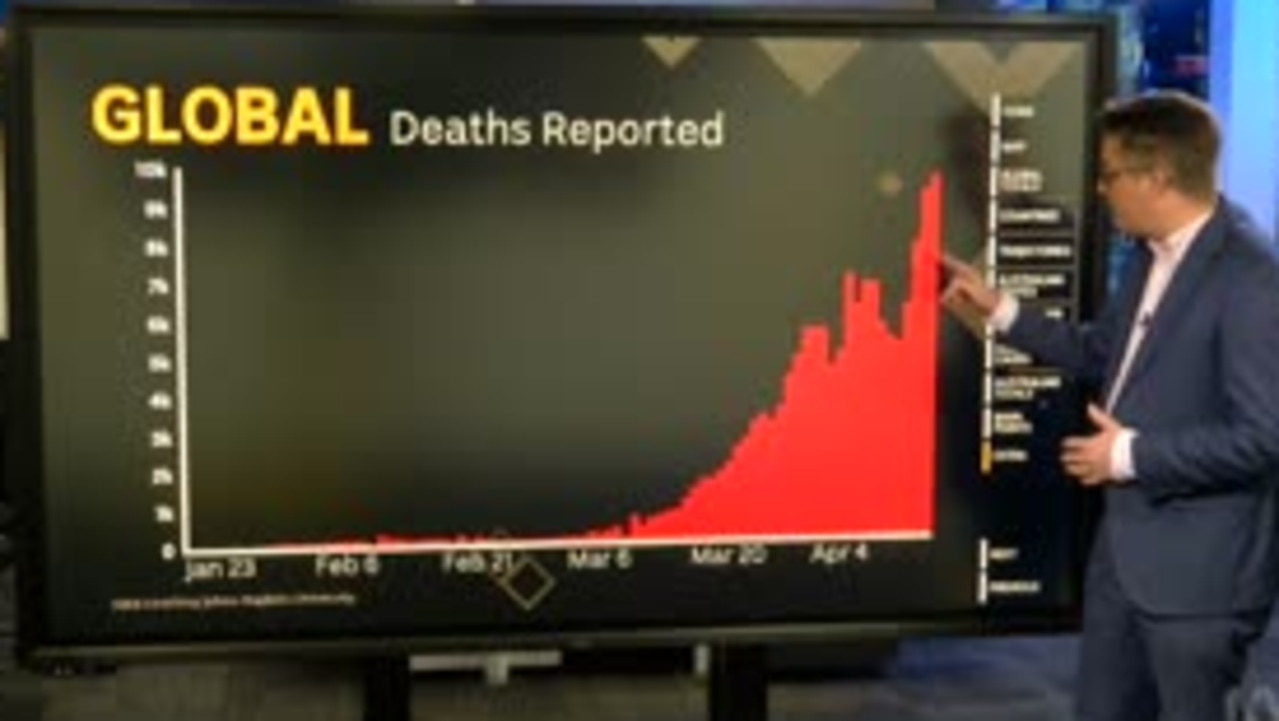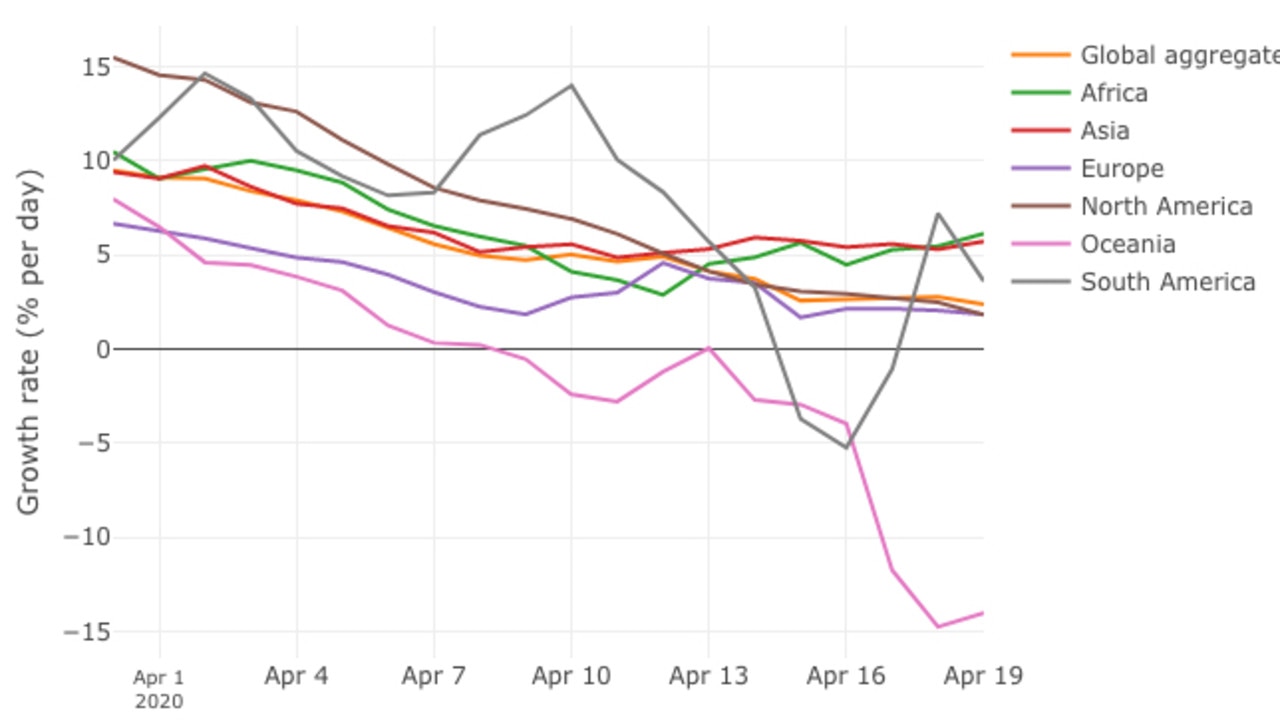Coronavirus Australia: Worrying graph shows peak of global pandemic yet to come
Eradication of COVID-19 may be possible in Australia, but a worrying new graph shows the peak of the pandemic is still to come.

Australia could be well on the way to eradicating COVID-19 and growth in the number of cases is starting to flatten in many parts of the world. However a worrying new graph shows that the peak of the global pandemic is yet to come.
In a segment on ABC’s Insiders Sunday night, reporter Casey Briggs presented a graph of the “global death curve”, saying it was becoming “increasingly clear” that we may never know the true impact of the virus pandemic.
“Around the world now, 158,000 deaths have been recorded and sadly, it does still seem that we’re climbing the death curve,” he explained.
Speaking to news.com.au, Doherty Institute and University of Melbourne infectious diseases epidemiologist James McCaw said the number of deaths around the world will continue to rise because, “despite some people’s perception, the epidemic is still in its early phases”.
RELATED: Follow the latest coronavirus updates

The Doherty Institute have been instrumental in the Federal Government’s coronavirus decision-making process.
“Even in the most heavily affected countries the majority of the population remains susceptible,” he said.
“Without continued suppression of transmission, or control achieved through a vaccine, we will record new infections and deaths for a long time to come.”
Our inability to understand the true impact of the COVID-19 pandemic is complicated by the fact that many countries’ death tolls are unreliable, and it’s not always clear straight away if people have died from coronavirus or something else.
“There’s still ongoing concerns about the level of transparency around the data from China,” Associate Professor specialising in global health security at the University of Sydney, Adam Kamradt-Scott, said in an interview with Time.
“What’s become increasingly apparent is that we’ve had a number of countries that have not put measures in place quickly enough.”
RELATED: Australia’s chance at eliminating virus
On Friday, the World Health Organisation (WHO) were forced to address countries reporting accurate numbers in virus cases and deaths, after a sharp spike in China’s figures. Wuhan, the epicentre of the coronavirus outbreak in China, added 325 confirmed cases and 1290 deaths to the city’s COVID-19 count after a “citywide investigation”, according to state media reports.
Reporting the true number of deaths caused by the virus is crucial to understanding the virus, the WHO’s lead scientist on COVID-19 Dr Maria Van Kerkhove said.
Without accurate reporting of cases and deaths, epidemiologists struggle to calculate the rates of infections and fatalities, which can be used to guide government response.
“This is something that is a challenge in an ongoing outbreak, to identify all of your cases and to identify all of your deaths as an outbreak happens, especially if systems are overwhelmed,” Dr Van Kerkhove told media.
“I would anticipate that many countries are going to be in a similar situation where they have to go back and review records and look to see ‘did we capture all of them’.”
RELATED: Warning of ‘explosive resurgence’ of virus

University of Melbourne Associate Professor Ben Phillips, a population ecologist specialising in invasive populations, told news.com.au deaths from coronavirus tend to peak about 18 to 20 days after new cases numbers arise.
“This is because it takes about this long, on average, between onset of symptoms and death, for people who are going to die,” he said.
“There is some variation around this estimate, but we would certainly expect peak deaths in Australia to have already happened, or to happen very soon.”
Prof Phillips, who developed an interactive website that uses raw data to estimate how many cases there will be in 10 days if Australia continues on the same trajectory of infections, said another way to measure the virus’ peak is to look at when active case numbers spike.
This has already happened in Australia, he explained, with three peaks: one in new cases, around March 28; one in active cases, around April 5; and one in deaths caused by coronavirus, around April 17.
“In Australia, the public health measures put in place have, for now, suppressed transmission and so deaths,” Prof McCaw said.
“But we remain susceptible and so relaxation of measures would result in an accelerating epidemic and growing number of cases and associated deaths.”
When asked if the world was past the point now of being able to flatten the death curve, Prof Phillips said there is plenty of evidence that measures in many countries are working “very effectively”, but “we need to keep it up”.




